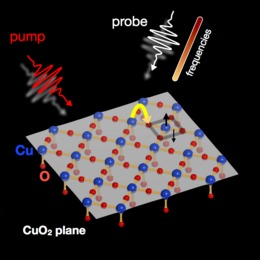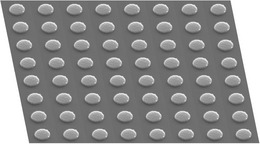Ulysses
Ultrafast LaboratorY for innovative SpectroScopiES (ULYSSES)
"Della conoscenza alle spalle ci lasciammo le colonne d'Ercole per amor di Scienza"
 Ultrafast electron dynamics of correlated materials
Ultrafast electron dynamics of correlated materials
Novel time-resolved techniques to investigate the non-equilibrium physics of strongly-correlated materials and unconventional superconductors...
Principal investigator: Dr. Claudio Giannetti
Thermomechanics at the nanoscale
 Investigating the heat diffusion and the mechanical energy transfer when the size of the system is of the order of the phonon mean-free path...
Investigating the heat diffusion and the mechanical energy transfer when the size of the system is of the order of the phonon mean-free path...
Principal investigator: Dr. Francesco Banfi
Development of novel time-resolved optical spectroscopies
 A multimodal approach to time-resolved surface-sensitive spectroscopy and dynamic atomic force microscopy
A multimodal approach to time-resolved surface-sensitive spectroscopy and dynamic atomic force microscopy
Principal investigator: Dr. Gabriele Ferrini
Ultrafast electron dynamics of correlated materials
 Our current research interests are focused on the study of the non-equilibrium properties of strongly-correlated systems (SCS) and, in particular, of cuprates and high-Tc superconductors. We are currently developing novel time-resolved optical spectroscopies, based on the supercontinuum white light produced by a photonic fiber seeded by a Ti:sapphire oscillator, to investigate the dynamics of the dielectric function as excitations are impulsively injected by an ultrashort laser pulse. This technique paves the way to the comprehension of the non-equilibrium properties of SCS and to achieve the light-manipulation of the electronic phases of metal oxides and other complex systems. The possibility to investigate the electronic properties on timescale faster than the electron-boson thermalization is promising to clarify the key unsolved problems in the physics of unconventional superconductivity in cuprates, i.e. the role of the generalized electron-boson coupling, including bosonic excitation of electronic origin such as spin fluctuations and current loops, in the superconducting pairing, the nature of the pseudogap phase and the interplay between superconductivity and high-energy electronic excitations. The results obtained by this novel time-resolved optical spectroscopy will provide a benchmark for the growing field of non-equilibrium theoretical models of SCS.
Our current research interests are focused on the study of the non-equilibrium properties of strongly-correlated systems (SCS) and, in particular, of cuprates and high-Tc superconductors. We are currently developing novel time-resolved optical spectroscopies, based on the supercontinuum white light produced by a photonic fiber seeded by a Ti:sapphire oscillator, to investigate the dynamics of the dielectric function as excitations are impulsively injected by an ultrashort laser pulse. This technique paves the way to the comprehension of the non-equilibrium properties of SCS and to achieve the light-manipulation of the electronic phases of metal oxides and other complex systems. The possibility to investigate the electronic properties on timescale faster than the electron-boson thermalization is promising to clarify the key unsolved problems in the physics of unconventional superconductivity in cuprates, i.e. the role of the generalized electron-boson coupling, including bosonic excitation of electronic origin such as spin fluctuations and current loops, in the superconducting pairing, the nature of the pseudogap phase and the interplay between superconductivity and high-energy electronic excitations. The results obtained by this novel time-resolved optical spectroscopy will provide a benchmark for the growing field of non-equilibrium theoretical models of SCS.
See more at Dr. Giannetti's homepage
Thermomechanics at the nanoscale
 The development of nanoprocessing and nanopatterning techniques, together with time-resolved utlra-fast spectroscopic techniques, opened the path to the investigation of the thermal and mechanical dynamics in nanosystems. These topics are of relevance both under a fundamental physics and technologycal stand points, the latter involving a variety of fields ranging from electronics to nanomedicine.
The development of nanoprocessing and nanopatterning techniques, together with time-resolved utlra-fast spectroscopic techniques, opened the path to the investigation of the thermal and mechanical dynamics in nanosystems. These topics are of relevance both under a fundamental physics and technologycal stand points, the latter involving a variety of fields ranging from electronics to nanomedicine.
When an object dimensions become comparable to the mean free path of its energy carriers (phonons, electrons, etc.), or when the dimensions are scaled to the point where finite-size effects emerge (i.e. energy level quantization), the mechanical and thermal properties deviate from the ones typically found at the macroscale. The thermal and mechanical dynamics at the nanoscale occure on a very fast time-scale an are severly perturbed by external probes. These issues require exploiting ultra-fast, non-contact techniques, such as ultra-fast optical spectroscopies, in order to access the thermomechanics at the nanoscale.
As far as applications are concerned, engineering materials at the meso and nanoscale allows creating a new class of materials, known as metamaterials, with tailored thermal and mechanical properties. Exploitation of ultra-fast laser sources on metamaterials allows selective excitation of different mechanical and thermal pathways, thus being of relavance in the fields of nanosensors and transducers.
These topics are investigated both experimentally and with theoretical modelling.
See more at Dr. Banfi's homepage
Development of novel time-resolved optical spectroscopies
The investigation of surface chemical reactions in biological samples, avoiding sample preparation treatments, is important to access the complex chemical machinery of living cells. Many cell functions depend on surface ligand-receptor complexes or surface chemical reactions and many kind of tumors start from the first cellular layer inside hollow organs. Therefore, non-invasive techniques that allow in vivo study of chemical processes located at surfaces are fundamental tools to develop and test biological models and target diseases.
Surface sensitive optical spectroscopy and dynamic atomic force microscopy, tailored to image surface films or molecular complexes, are a possible answer to these issues.
Surface sensitive optical spectroscopy concerns the development of (imaging) techniques to investigate thin films or molecular complexes at surfaces with a spatial resolution substantially better than half the wavelength of light.
Dynamic atomic force microscopy concerns the development of scanning probe techniques sensing force fields with (sub)nanometer spatial resolution.
A multimodal approach, based on merging of these seemingly different techniques, exploit a complementary characterization of surface films/molecular complexes needed to address relevant problems.  As an example of the ongoing activity, we mention ultra-thin film thermodynamics, fluorescence resonance energy transfer to study self assembled monolayers, surface sensitive spectroscopies (evanescent waves, ellipsometry), wavelet techniques (see Figure) applied to dynamic force spectroscopy or optical spectroscopy data as a perspective for new analytical tools in materials analysis.
As an example of the ongoing activity, we mention ultra-thin film thermodynamics, fluorescence resonance energy transfer to study self assembled monolayers, surface sensitive spectroscopies (evanescent waves, ellipsometry), wavelet techniques (see Figure) applied to dynamic force spectroscopy or optical spectroscopy data as a perspective for new analytical tools in materials analysis.
Wavelet cross-correlation showing the response of a harmonic oscillator (mass-spring model) to a chirper driver, i.e. a driver with a linear frequency sweep in time. The resonance frequency is at 1 MHz. The arrows direction evidence the local phase relations between the excited oscillator and the driver (arrow pointing right: in-phase; left: anti-phase, up: oscillator lagging behind driver by 90°)
See more at Dr. Ferrini's homepage
